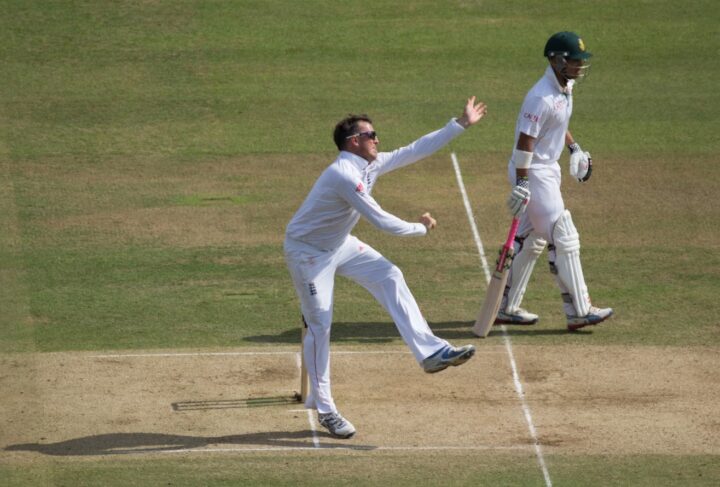This year’s abandoned IPL involved a familiar procession at the toss. Meet in the middle, make your call, win the toss, bowl first (unless your name is Rohit Sharma in Chennai). It’s a well-rehearsed act in T20 cricket, almost automatic at this point. So established is the urge to chase that it takes little imagination to guess what the winning captain will politely opt for.
With this familiarity, one would expect a matching level of competence. Surely, teams are so used to chasing scores great and small that by now fool-proof plans have been meticulously plotted to make life incredibly easy for batters. Not quite.
Time and time again, teams make life incredibly hard for themselves by adopting chasing tactics that range from embarrassingly conservative to self-destructively dangerous. If a team wants to chase, they should have a clear plan for each phase of the game. Let’s give them one.
Respect the Pitch
Before the batting even starts, teams often forget that they have just had a twenty over long practical lesson. Twenty overs to see if the ball’s turning, to see quite how easy it is to bat. Twenty overs, which it seems that batters often ignore or forget.
Batting orders seem to sometimes forget that this is the same pitch on which they have just bowled exclusively slower cutters, and find themselves baffled by the same trick being used against them. Unless the pitch or atmospheric conditions suddenly deteriorate, you should always know what to expect.
Furthermore, you can often expect a bit more assistance in batting than your opponents. Playing at night, the team batting second are often beneficiaries of a helpful layer of dew on the outfield. As bowlers struggle to get to grips with a sopping wet ball, the team chasing should be mindful of how best to exploit this. Trust that the ball will likely slide onto your bat, the majority of times you will be free from any nasty tricks.
Of course, there are no hard and fast rules or certainties. Jos Buttler and the Rajasthan Royals found themselves punished for having the temerity to hit a six into the empty stands. Gone was the old, damp ball, in came a dry one which happily turned for the next five or so overs. They were truly victims of their own success.
This is, of course, a cruel exception. Most of the time you will be in good stead if you remember the quirks of the pitch and trust the dew to foil the bowlers.
Powerplay Plodders Beware
Right, now the actual batting begins.
Too often, chasing teams fall into a trap whether their target is miniscule or mammoth. Their fear of losing early wickets overrides their goal of scoring in the Powerplay. Chasing 220? Ooh careful, can’t lose it early. Chasing 140? No need to hurry, there’s plenty of time. The result is always the same, too much left to do later on.
Opening batters suck up delivery after delivery, failing to score at much more than a run a ball. The damage done is that the Powerplay is where you should be looking to get a lot of the hard work done. This is for a couple of reasons.
One is the obvious idea of trying to exploit the fielding restrictions at play. With only two fielders allowed outside of the circle, a lot of damage can be done. Scoring boundaries early on both sets the tone of the innings psychologically and takes a healthy chunk out of the required total.
Similarly, a new ball is harder and therefore easier to hit for distance. As the innings goes on, the ball becomes softer and requires more force from to batter to clear the ropes. The trade-off here, is that a new ball is admittedly better for bowling. If a batter is brave, there is a lot to gain.
The best openers are capable of going big early, even if they get out. Yes, someone like KL Rahul may get 50 runs, but he’ll take about 50 balls to get there. Someone like Jos Buttler or Devdutt Padikkal is more likely to get out early, but they’ll certainly give you bang for your buck. This will be more useful when it comes to winning.
Weighed Down by the Anchor
As if enough teams didn’t sabotage their chase with a somewhat conservative opening partnership, many find their fatal flaw in the role of the number 3 or number 4.
At some point, the world of T20 decided that slow scoring and a low boundary percentage is acceptable if you are ‘the anchor’. This role is regrettable for a multitude of reasons.
One is quite how quickly they can kill their own team’s momentum. If two openers are hitting frequent boundaries and one goes out, you would logically want someone to carry on their good work. Teams fail in this regard. Delhi Capitals are as fine an example as any. Prithvi Shaw and Shikhar Dhawan are a brilliant opening pairing, they score quickly and go about their job pretty well. At the fall of a wicket, DC look to put in either Steve Smith or Ajinkya Rahane. With this, the scoring often grinds to a halt.
An anchor far too often weighs down their own team. Smith and Rahane cannot keep up the necessary speed of scoring established, and cause DC to run out of steam early.
This leads into another issue that anchors cause. Undue pressure on their partner. If one player is nurdling singles, the other knows that they have to pick up the slack. This often leads to iffy dismissals where batters try to force boundaries where they are not to be had. Two players scoring well balances out the workload quite nicely, neither has more responsibility to push the temp. An anchor does the opposite.
Finally, the manner in which anchor players score is often dangerous in its nature of inviting run outs. Relying heavily on ‘quick singles’ and ‘turning ones into twos’ is a fool’s game. Your own slow scoring forces you to take silly risks, it will always cost wickets.
The anchor role is one of T20 cricket’s biggest mistakes. It praises the act of slow scoring under the guise of ‘steadying the ship’. But in reality it simply pulls the whole thing down to the bottom of the ocean.
Overreliance on Middle Order
From the catastrophe of the anchor, comes the next issue in the order. An overly romantic view of middle order batters.
Teams and fans alike, are guilty of expecting players to constantly pull off miracles down the order. Royal Challengers Bangalore’s own AB de Villiers is without doubt the king of this. AB is perhaps the greatest white ball batter ever and has the unquestionable ability to win games for himself down the order. The problem is that teams have a habit of overestimating how common this is.
By nature, players will fail to produce match-winning knocks more times than they will succeed. It is a risky business to allow the top order to rely on the middle order producing miracle performances.
The issue here is that middle order players with high strike rates are almost the dictionary of ‘high risk high reward’. People like Hardik Pandya, Andre Russell, and Kieron Pollard will either quickly get runs, or quickly get out. Teams have a bad habit of leaving it all for these wildcards to do.
Teams should always be constructed to have players who can score rapidly in the middle overs, but they should do their best to avoid constantly requiring these ‘finishers’ to do just that. It should not come as a surprise when they get caught in their first five balls trying for a six. It’s just a part of their game.
Once again, the best strategy is to go hard early. Teams can expect their middle order to score, but it would be foolish to rely on twenty ball fifties every other game.
Poor Planning at the Death
Many chases are not settled early and end up being decided in the death overs. Bowlers are trying to bowl defensively, the field is set to constrict the flow of runs. How does the chasing team approach this?
Step one is to focus on boundaries over all else. Rotating the strike is only useful if one of the batters is a total liability. Attempting to nurdle singles to chip away at the total has more of a negative effect than positive. It is, in basic terms, the act of kicking the can down the road and leaving a problem for later. T20s tend to be won by the team with the superior boundary percentage. This should not be forgotten at the death.
Step two is to trust the data. Players and teams should target certain match-ups as identifying these can seriously improve your chances in tight moments. If the bowler is a left-armer and batsman A historically struggles to score against lefties, then the goal should be for the other batsman to face as many balls as possible.
Teams should be equally willing to target bowlers. The cricketing world seems to have accepted that Jasprit Bumrah, for example, should always be seen off as opposed to attacked. This means that batting sides have to make up the deficit by either targeting the weakest bowler or exploiting a favourable match-up elsewhere.
Of course, the easiest way to win at the death is to get the work done early, but that is another matter entirely.
The Perfect Chase
So, there’s the formula. Start strong, don’t slow down, and don’t leave too much for the lower order. Simples.
Daniel Booth









Well it’s interesting piece, but I just don’t believe that anyone can analyse a game of basically 20 over slog to this sort of degree. There are just too many samey games, often 150 plays 150 or a very convenient “thri!ling” run chase in the last few overs.
I gave up watching it 5 years ago because it became a bore and I got tired of the piss heads. When it started in 2003 it was a 3 week bit of fun, now the bloody IPL goes on for ever and it’s destroying the proper game. I did however revisit two games last year and nothing has changed in my opinion. In fact I left early. Like anything more is rarely better in life. It’s like eating McDonald’s every day – instantly forgettable.
Sorry!
the facts you covered in the article are really important. all the matches are played on that factors. and great website to I loved it.
Right, now the actual batting begins.